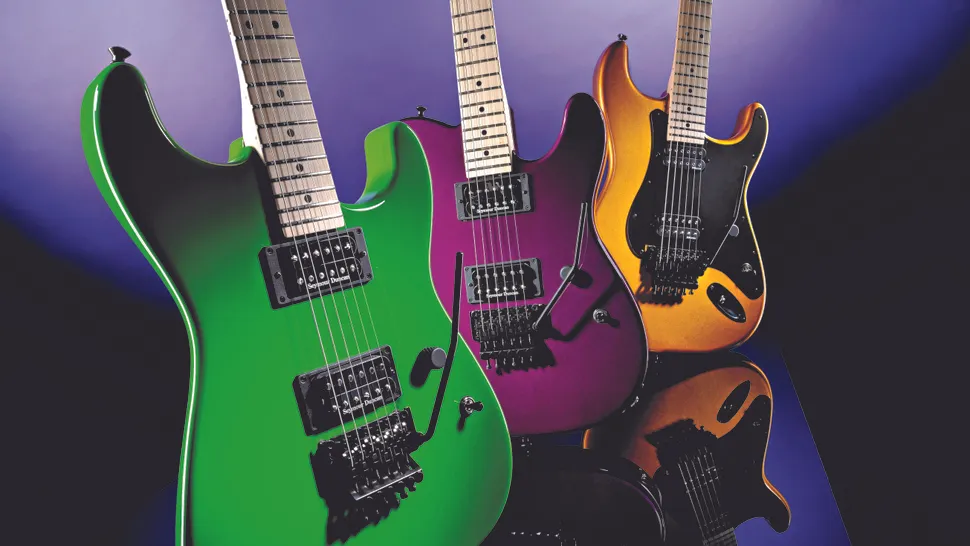 Buying a guitar is a personal and subjective thing - what might be the best electric guitar for you might not be right for someone else. However, there are quite a few things to take into consideration when buying one that can make choosing a little easier.
Buying a guitar is a personal and subjective thing - what might be the best electric guitar for you might not be right for someone else. However, there are quite a few things to take into consideration when buying one that can make choosing a little easier. Since their inception in 1931 with the Rickenbacker ‘Frying Pan’ lapsteel, electric guitars have come a long way, though early models are still popular today. The Fender Esquire was introduced in 1950 and evolved into the Telecaster which is still played by beginners and pros alike. After that, the Gibson Les Paul was released in 1952, and the Fender Strat in 1954. Whilst there are many different brands and models out there, these classics are still incredibly popular.
Think about what you want out of your new electric guitar; do you want something to learn on? Are you upgrading after having played for a few years? Are you adding to a collection of guitars? Are you playing mainly one style of music, or a few? Answering these before you part with your cash can really help find the best electric guitar for you.
Electric guitar body shape
The body shape of your guitar plays quite a large part in how comfortable it will be to play. If you’re sat down, the contours of the body determine how it sits on you, likewise if you’re stood up - most of the weight is in the body, so you need to take that into consideration.
Electric guitar wood types
As well as the shape and size of the guitar, weight is largely determined by the wood used. Though often contested, the general consensus is that denser woods tend to yield more sustain. Mahogany, used a lot by Gibson, usually lends a slightly mellower, warmer sound, with beautiful low and mid frequencies.
Fender often use alder as it provides an even frequency response, without it being too light or too heavy, as well as ash, which is usually a little brighter sounding. Something like basswood is quite light and, because it’s easily sourced, is usually cheap so gets used on many budget guitars. Don’t let that put you off though - tone-wise, it’s fairly transparent and evenly balanced.
Three Charvel guitars with Floyd Roses on a purple/black background
(Image credit: Future)
Pickup types
Pickups play the biggest role in shaping your electric guitar’s sound (alongside you of course!). Pickups are basically magnets housed in a bobbin, wound with wire, that convert the vibrations caused by your moving strings into an electrical signal which is then sent to your amp.
There are many different pickup types out there, but the most popular types are single coils and humbuckers. Single coil pickups are found in a lot of Fender guitars, like the Strat and the Tele and deliver a bright, clear sound, often with a slight scoop in the mids. Strat pickups often sound ‘glassy’ and ‘chimey’, and ‘twang’ is synonymous with the Tele.
Humbuckers tend to sound bigger, beefier and warmer. They fill out slightly more space in a mix and usually give out more output than single coils, making them break up sooner. If you already play a guitar with single-coils, then maybe look for something with humbuckers, or vice versa, so you can cover more ground.
There are guitars out there that feature a mixture of single coils and humbucker pickups, like the HSS Strat, giving you the best of both worlds. There are also coil-tapped or coil-split humbuckers that, when engaged, effectively act as single coils.
Electric guitar hardware
An electric guitar’s hardware can help improve tuning stability, tone and longevity. As you start to spend more, you’ll get things like better quality tuners (sometimes locking tuners), sturdier hardware that fits together better and improves sustain, as well as better and more reliable electronics that keep your signal clearer.
Neck profile
Neck profiles can vary too, and should be considered when looking for the best electric guitar for you. It’s all very much down to personal preference, but neck profiles can range from super thin, like on the Ibanez RG550, to thicker, more vintage-style profiles like on the ES-335. Generally speaking, faster, shreddier players prefer thin necks, and old-school blues and rock players go for either a thick neck or something in the middle.
There is definitely space for a bit of 'gut feeling' when you're shopping. We've all had situations where we've played a guitar we'd never normally have looked twice at and had it pleasantly surprise us. Keeping an open mind is no bad thing. Sometimes when you pick up a guitar you just know. There's no rationale.
But, instinct aside, you can at least put yourself in the right ballpark by using guides like this one to hone in on what works for you. With so many variables, it can be hard to know where to start. Maybe you'll find your dream guitar with a quick scroll, or maybe it will take some further research, but we hope to help you start that journey right here.